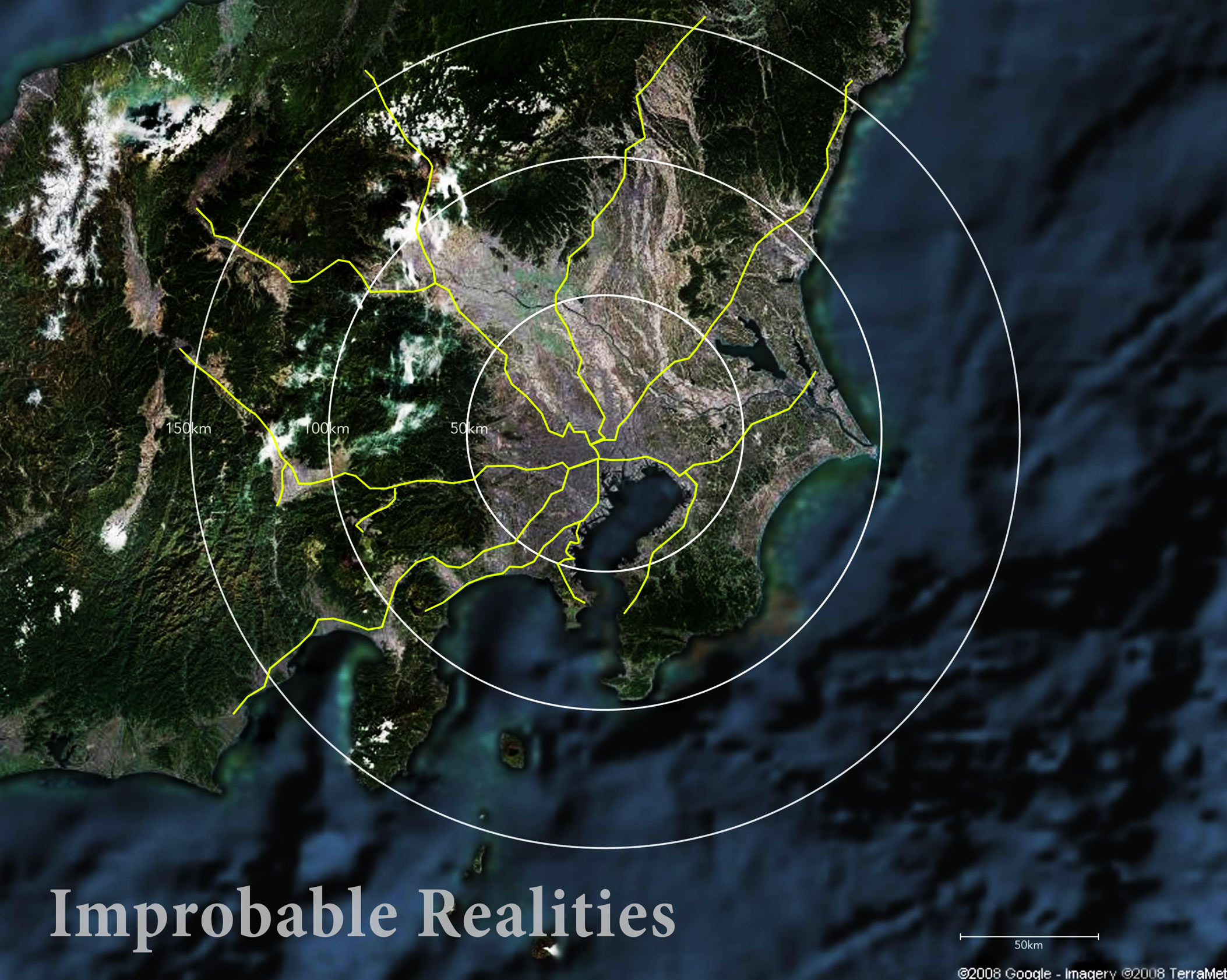Improbable Realities
Tokyo is stretching. Like around most other metropoles, a relentless desire for peaceful cosiness lets suburbia grow into a wasteland of hyper-dense family-home neatness. The alternative is the weekender’s escape to self-contained villages of homogeneous tourism.In search for types of living that go beyond the conventional development of simply extending the urban enclosure or the weekender’s resort-shopping, the project focuses on unlikely sites, mostly so remote that the official building code does not apply, but within a two-hour radius of central Tokyo.
One of the sites is close to Mt Fuji, overlooking the Kofu plateau. While nothing except mountains is in immediate sight, a small farmers’ village is just two kilometres away.
The roughly ten-hectare site is divided following strategies of the curious opportunist: First, occupy the site’s characteristic hotspots. With upper and lower limit for occupancy set, the distances between the occupied hotspots emerge naturally. Plot lines are not drawn a priori but also emerge over time demarcating the median between the neighbouring occupied points.
Like the city in the past, the countryside is becoming the new catalyst for change. But while the movement to the city left everything behind and sought the new in the city, the movement to the countryside keeps its convenient contact with the city ready on call, made possible by the speed of technology.
FB, 2007
Title
year
Language
